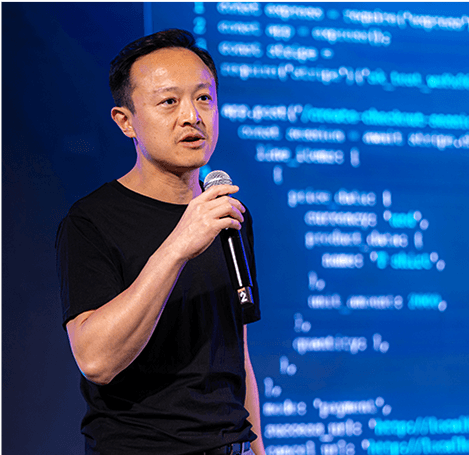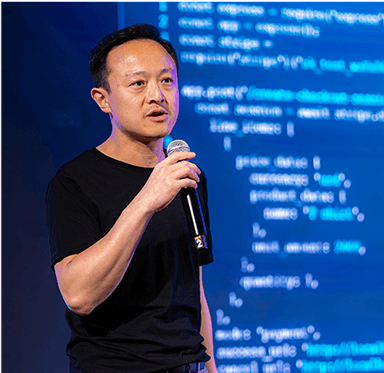Smart Cities, Smarter Solutions: The Role of Blockchain in Shaping Urban Futures


LightLink CEO Roy Hui explores how AI and blockchain are shaping the future of smart cities — enabling automation, personalisation, and secure urban infrastructure at scale.
At Pellar, we've spent the past eight years building blockchain infrastructure for ambitious, world-changing projects. Many of these clients came to us with the same underlying question:
What does the future actually look like — and how do we build for it today?
Few questions capture that tension better than the idea of a smart city — a fully digitised, responsive urban environment where humans, machines, and infrastructure operate in seamless coordination.
But what makes a city truly smart? And how do we ensure the technologies we rely on scale with us — without leaving trust, privacy, and autonomy behind?
The Smart City Vision Was Stuck — Until Now
The phrase “smart city” has been around for decades. The vision used to go something like this:
- Digital by design
- Connected across devices, sensors, and systems
- Automated through AI and machine logic
- Smart & predictive, powered by real-time data and learning
- Abstracted UX — human-machine interaction that feels natural, even invisible
A simple example: traffic lights dynamically favour eastbound lanes during rush hour, redirecting vehicles, syncing with car navigation systems, and even sending alerts to office workers to leave later. When you get home, your room is already cooled to your preferred temperature, and your favourite playlist fades in.
That future sounded impressive twenty years ago. It still does. But here’s the problem: it’s a great vision but it’s barely changed in 20 years. And while tech giants like Apple and Google pushed this vision forward from a consumer angle (think Siri, Apple Home, Nest), the broader systems — traffic grids, utilities, government services — lagged far behind.
But today, the game is changing. Smart city thinking is evolving fast — and the key driver of that transformation is AI.
Then AI Entered the Chat
Today’s smart city thinking has evolved — radically — because of artificial intelligence.
In the near future, you don’t “drive” home. An autonomous vehicle takes you there. There are no traffic lights — no need for them. Congestion is algorithmically avoided before it starts.
Your environment doesn’t just adjust to your presence — it responds to your biology. Room temperature adapts to your BMI, insulin, or adrenaline levels to trigger relaxation or boost productivity.
And the user interface of the smart city? It’s no longer a massive touchscreen control panel. As a traffic controller in a government agency, you might simply say: Provide three real-time options to optimise current traffic flow — with pros and cons for each.
This is where AI thrives — infinite productivity, decision-making, and creativity. But the question isn’t whether AI can run a city.
It’s how we ensure it runs it well.
AI Brings Abundance. Blockchain Brings Scarcity.
As artificial intelligence evolves, it brings with it an unprecedented sense of abundance — near-limitless compute power, autonomous decision-making, and real-time optimisation at scale. It's a force multiplier for productivity and coordination across entire cities.
But abundance without constraint leads to instability.
This is where blockchain plays a critical role. It doesn’t just store data — it defines what’s true, enforces scarcity, and does so securely. Blockchain provides the guardrails: immutable records, decentralised consensus, and programmable trust.
Together, AI and blockchain form the cognitive backbone of tomorrow’s cities — one drives value creation, the other ensures it’s grounded in logic, transparency, and trust.

Blockchain: The Trust Layer of Urban Intelligence
Blockchain isn’t the main character — it’s the invisible layer holding the system together.
It works behind the scenes to:
- Store sensor data (e.g. temperature, usage, location) immutably
- Enable smart contracts to coordinate autonomous services
- Ensure that payments, rewards, and permissions are tamper-proof
- Keep personal data secure with privacy-preserving tools like zkAuth
For example, a city-wide temperature system could pull readings from thousands of IoT devices, average them on-chain via smart contracts, and feed that data to AI agents managing power stations, autonomous vehicles, and HVAC systems in homes.
Every actor — human or machine — gets the same source of truth.
Scarcity in the Age of Agents
Blockchain also enforces economic logic in an agent-powered world.
In future cities, AI agents will transact constantly — bidding for compute, energy, bandwidth, or even personal data. But AI can’t be able to mint tokens in an unlimited capacity.
Blockchain introduces hard limits:
- Funds are distributed transparently
- Assets are scarce and verifiable
- Rules are enforced by code
Imagine this: you agree (anonymously) to share your coffee preferences — verified as a ZK proof — with an AI agent working for Starbucks HQ. You're compensated not with points or promises, but with an on-chain stablecoin.
This isn’t theoretical. It’s just around the corner, and we are building elements of it.
LightLink’s Role in the Transition
At LightLink, we’re building the infrastructure to power this shift.
- Enterprise Mode allows large-scale systems to operate gaslessly — a key unlock for high-frequency AI interactions.
- Layer 2 architecture ensures speed, scalability, and low cost — even when millions of microtransactions happen per second.
- Bolt, our developer toolkit, makes it easy to build on this infrastructure — no Solidity required.
- Our upcoming tools, like zkAuth, preserve privacy without sacrificing usability.
- We're actively testing MCP (Machine-Computer Protocol) standards to ensure AI agents can interact with LightLink natively — reading data, executing transactions, and coordinating autonomously.
We’re designing this infrastructure not for today’s cities — but for the ones AI will help shape.
What’s the Endgame?
It’s not endless dashboards, surveillance drones, or dystopian control rooms. It’s something much simpler — and far more human.
It’s kids playing in the park. Parents stretched out on picnic rugs, music in the background, wine in hand. A city that works so well, you barely notice it — but you feel it.
That kind of future is only possible with blockchain and zero-knowledge tech. Without it, your data becomes someone else’s asset. Your movements become points on a surveillance grid. With it, you stay in control — choosing what’s shared, what stays private, and how value flows.
More life. Less friction.
Just like electricity and the printing press reshaped humanity, blockchain and AI will redefine how we live, move, and interact. And we’re not just watching it happen — we’re building it, one block, one agent, one city at a time.
Want To Build With Us?
If you’re an enterprise exploring next-gen urban tech, reach out at hello@lightlink.io to discuss tailored integrations and pilot programs. If you’re a developer, founder, or simply curious about how blockchain and AI can power smarter cities, join our 200 K+ strong community on Twitter, Discord, Telegram, and LinkedIn.
LightLink is designed for every innovator who believes in making cities more efficient, secure, and human-centric. Thank you for being part of our journey—let’s #DiscoverPossible together.






